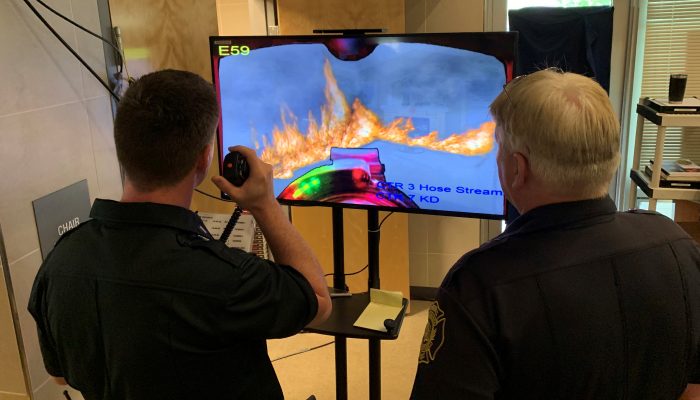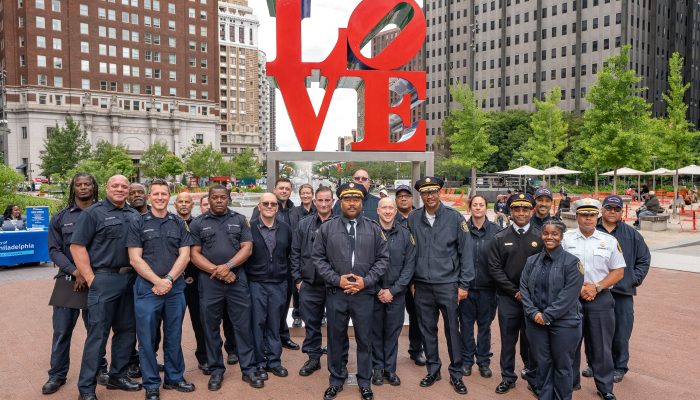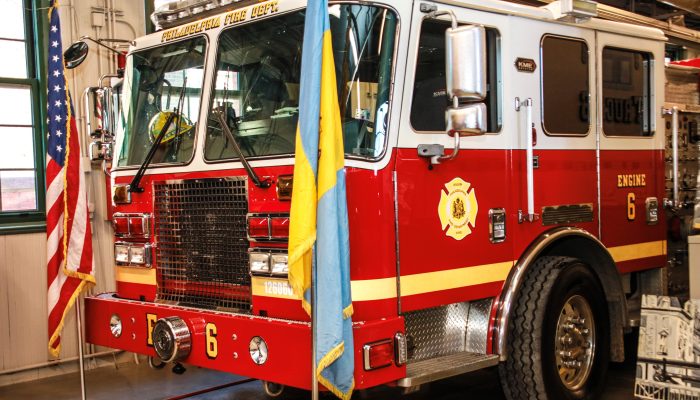Smoke is billowing from the roof of an old stone church. As fire companies arrive on scene, they each have a role to play. So where should the ladders be placed? What about the hoses? What’s the best way to attack this type of fire in this type of structure?
Those crucial decisions will be made by the incident commander, who is charged with coordinating people, resources and equipment to respond in the safest and most effective way. The Philadelphia Fire Department’s new incident command course — which includes a simulated church fire — will help members understand the best tactics and strategies for a range of emergencies they could encounter on the job.
“This training is only going to make us stronger and better,” said Battalion Chief Anthony Bompadre, who led the effort to design and implement the program.
Created by and for PFD members, the four-day class at Engine 38 in Tacony combines video simulations, visual presentations and first-hand accounts of local incidents to impart lessons on various types of fires, as well as hazmat and mass casualty responses.
The simulations offer different views of the same incident, incorporating actual Philadelphia radio dispatches and images of city streets and buildings. Members act out their responses in real time, reinforcing the importance of relaying critical information from each vantage point to the incident commander, who can only see the scenario unfolding from one angle.
“It’s vital not just to know your own job, but to understand what everybody around you is doing,” said Fire Commissioner Adam K. Thiel. “We’re very fortunate to be able to provide this critical training.”
Funded by a $2.7 million grant from the Federal Emergency Management Agency, the program is the first formalized incident command training the PFD has offered in years. PFD members devised the curriculum based on their own experiences, with input from retired chiefs and other agencies including the Maryland Fire Rescue Institute.
“I’m so proud of all my peers who put together this course,” said Fire Capt. Joseph Melnick. “It’s the best officer training I’ve received since being promoted.”
About 600 members are expected to complete the program during the first round of training, which ends later this year. Additional cohorts are planned.




